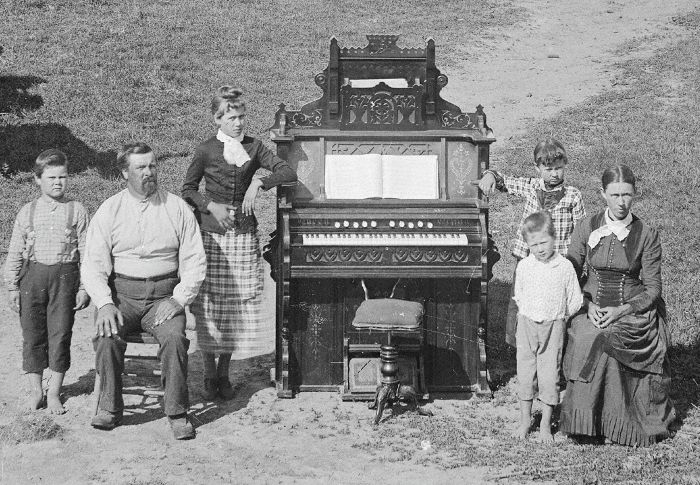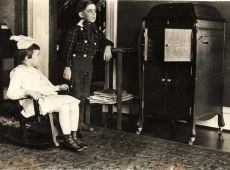| |
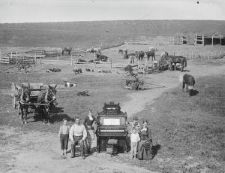
Pump organ at Sod House, 1890's by Solomon Butcher
The David Hilton family near Sargent, Nebraska. Mrs. Hilton and her eldest daughter were adamant that they not be photographed in front of their sod house, because they wished to send copies of the picture to friends and relatives elsewhere and thought it embarassing to be seen living in a house of dirt. But they did want to be seen with their new pump organ, so they made Mr. Hilton and the photographer drag the organ out of the house for the photographs, then drag it back in again. (Courtesy History Nebraska)
|
|
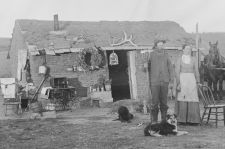
The John Curry Homestead with sewing machine
John Curry and wife's sod house near West Union, Custer County, Nebraska, 1886 by Solomon D. Butcher. Known in Nebraska as "American Gothic (Courtesy History Nebraska)
|
|
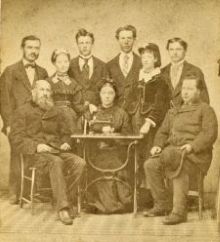
Family portrait with sewing machine
By Welch & Co. Photographic Artist, Suspension Bridge, N.Y.
|
|
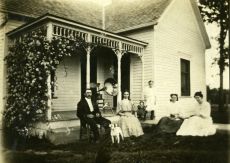
Billings Family portrait with Phonograph.
Allen Billings family photographed outside their house with doll and Phonograph on chair - morninglory horn with flowers, ca. 1910. (PM-0025)
|
| |
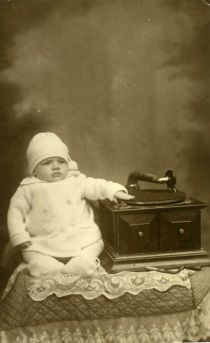
Baby in portrait with Gramophone, ca. 1915 (PM-0689).
|
|
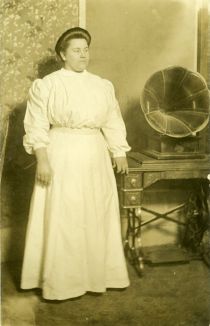
Portrait of Woman with her Columbia Graphophone and Sewing Machine, ca. 1910 (PM-0021).
|
|

Portrait of man and woman with Edison phonograph.
Morninglory flower horn phonograph and suitcase of cylinder records in front of home for portrait, ca.1910 (PM-0026).
|
|
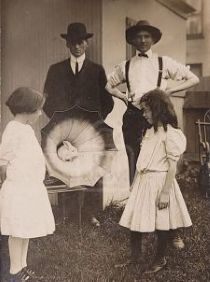
Two children with rabbit inside Phonograph horn.
|
Selling Phonographs, Organs, and Sewing Machines
When the phonograph became a consumer item for the home in the 1890's the store that simply sold phonographs was rare. Phonographs could be ordered by mail, purchased from travelling salesmen, or purchased in a local store. Invariably, the local store had additional products or businesses. A general store, bicycle shop, piano and music stores with sheet music and other musical instruments, drug stores, and many other unexpected businesses like funeral services and insurance companies could sell phonographs as part of their business.
The following are two examples of businesses that advertised selling phonographs along with sewing machines, pianos, and organs.
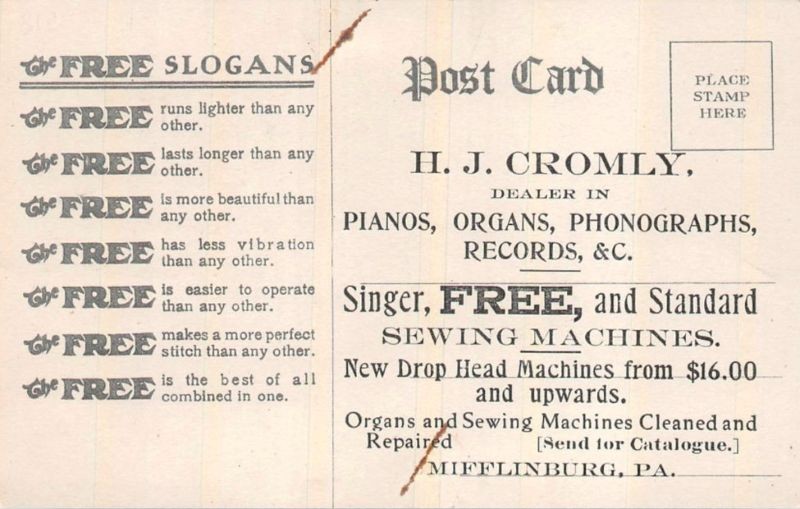
Postcard ad from H.J. Cromley advertising Phonographs, Sewing Machines, Pianos and Organs. Mifflinburg, PA

Front of H.J. Cromley postcard promoting The Free Sewing Machine.

Back of postcard by J.N. & I.J. Smith, Skowhegan, Maine offering Phonographs, Sewing Machines, Pianos and Organs.
There are many connections between the phonograph (talking machine) and the sewing machine. See Phonographia's
Phonographs and Sewing Machines for more details.

